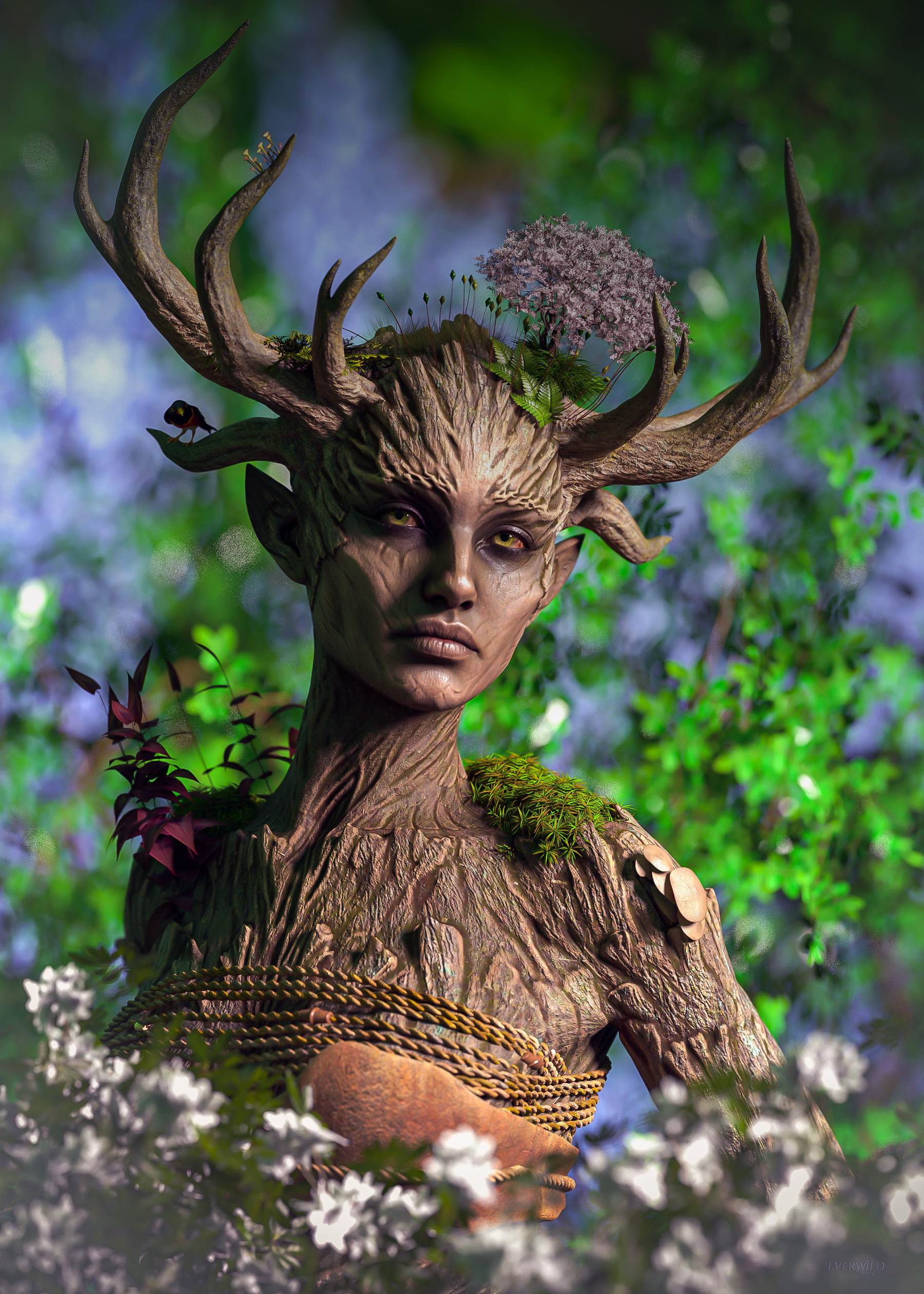Dryad
Introduction
Botanical beings built of gnarled trunks, vines, and leaves, with branches for antlers and layers of mushrooms, starmoss, and lichens for fur. It is suggested they are one of the few remaining races of Titans, made by the Osai.
"They looked like normal creatures of the forest: bears, elk and moose, wolves and foxes, even boars and bobcats. There were dragons and kirin, owls and eagles, and raccoons. But these were no ordinary woodland creatures. They weren't of the forest; they were the forest. Finally, Salem and I understood. This was the heart and soul of the Everwild."
It's uncertain if dryads are capable of shapeshifting and have chosen to adopt forms based on native woodland creatures or if they've evolved this way. While they may look like animal-plant hybrids, dryads are botanical biologically, and rely on the help of other species in order to reproduce. They are a collective and depend on the mycelium and the mycorrhizal networks of the forests to communicate among themselves and with the forest itself. They are territorial creatures, most often reclusive, with a tendency to adopt clandestine defensive measures to protect themselves and their native habitat.
Basic Information
Genetics and Reproduction
Additional Information
Perception and Sensory Capabilities
Symbiotic and Parasitic organisms
- Fairies
- Pixies
- Sprites
- Dragons
- Mundane forest dwellers

Varieties of Dryads
- Bears
- Wolves
- Elk
- Moose
- Lynxes
- Bobcats
- raccoons
- owls
- eagles
- kirin
- hummingbirds

Comments